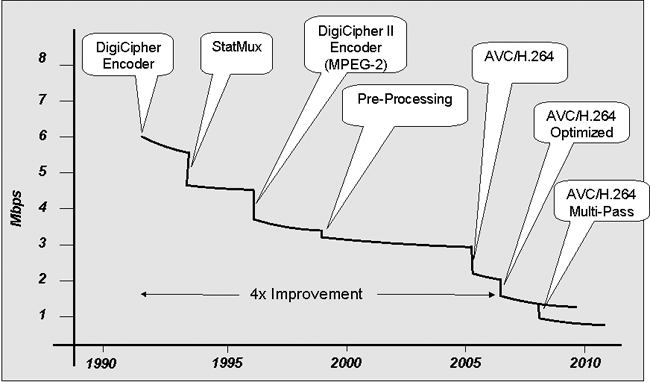Google calls for a speedy transition to the VP9 codec
The computer industry did not have time to master the VP8 codec, and Google is already calling for a transition to a much more advanced VP9. YouTube has opened a channel with VP9 compressed videos . To watch this video, Chrome 28 Dev users need to find and deselect the corresponding checkbox in their browser settings.

The final version of the VP9 specifications is scheduled to be approved on June 19, and by June 24, support for this codec will be enabled by default for Chrome 29 Dev users.
Unlike the proprietary H.264 codec that dominates the market, the VP9 standard is open and does not require payment of license fees for its use. According to Google, the financial conditions of H.264 and H.265 are unacceptable for startups, developers, schools and other users who can run their video project: “We want to ensure that they will not pay 5-6 million dollars each year in favor of regulators, ” said Matt Frost, senior project manager for the Chrome Web Media group, in a speech at the Google I / O conference.
')
At Google’s I / O conference yesterday, Google’s engineers also demonstrated a demo that is 50% smaller in size than H.264, and it looks like it’s the same quality from the screen. Google will save a lot of money by reducing the traffic from YouTube by half, even if only for Chrome users.
At the same time, the new proprietary codec H.265, which is also twice as effective as H.264 , is on the way: it allows you to broadcast 4K video on a 20-30 Mbit / s band.
The video compression level is improved twice every 6-8 years due to new codecs, so there is nothing strange here.

In January, the draft H.265 standard was approved by the ITU , and in 12-18 months the first devices with hardware support are expected to appear.
Google developers say that H.265 exceeds VP9 in compression ratio by an average of 1%, but in some videos, VP9 shows itself better. Video quality tests are a very subjective thing, by definition, but it’s not about efficiency. The main advantage of VP9 is precisely in license purity and almost guaranteed absence of license fees. By raising a commercial video broadcast service, you can be almost completely sure that you will not have to pay royalties to patent holders.

The final version of the VP9 specifications is scheduled to be approved on June 19, and by June 24, support for this codec will be enabled by default for Chrome 29 Dev users.
Unlike the proprietary H.264 codec that dominates the market, the VP9 standard is open and does not require payment of license fees for its use. According to Google, the financial conditions of H.264 and H.265 are unacceptable for startups, developers, schools and other users who can run their video project: “We want to ensure that they will not pay 5-6 million dollars each year in favor of regulators, ” said Matt Frost, senior project manager for the Chrome Web Media group, in a speech at the Google I / O conference.
')
At Google’s I / O conference yesterday, Google’s engineers also demonstrated a demo that is 50% smaller in size than H.264, and it looks like it’s the same quality from the screen. Google will save a lot of money by reducing the traffic from YouTube by half, even if only for Chrome users.
At the same time, the new proprietary codec H.265, which is also twice as effective as H.264 , is on the way: it allows you to broadcast 4K video on a 20-30 Mbit / s band.
The video compression level is improved twice every 6-8 years due to new codecs, so there is nothing strange here.

In January, the draft H.265 standard was approved by the ITU , and in 12-18 months the first devices with hardware support are expected to appear.
Google developers say that H.265 exceeds VP9 in compression ratio by an average of 1%, but in some videos, VP9 shows itself better. Video quality tests are a very subjective thing, by definition, but it’s not about efficiency. The main advantage of VP9 is precisely in license purity and almost guaranteed absence of license fees. By raising a commercial video broadcast service, you can be almost completely sure that you will not have to pay royalties to patent holders.
Source: https://habr.com/ru/post/180033/
All Articles